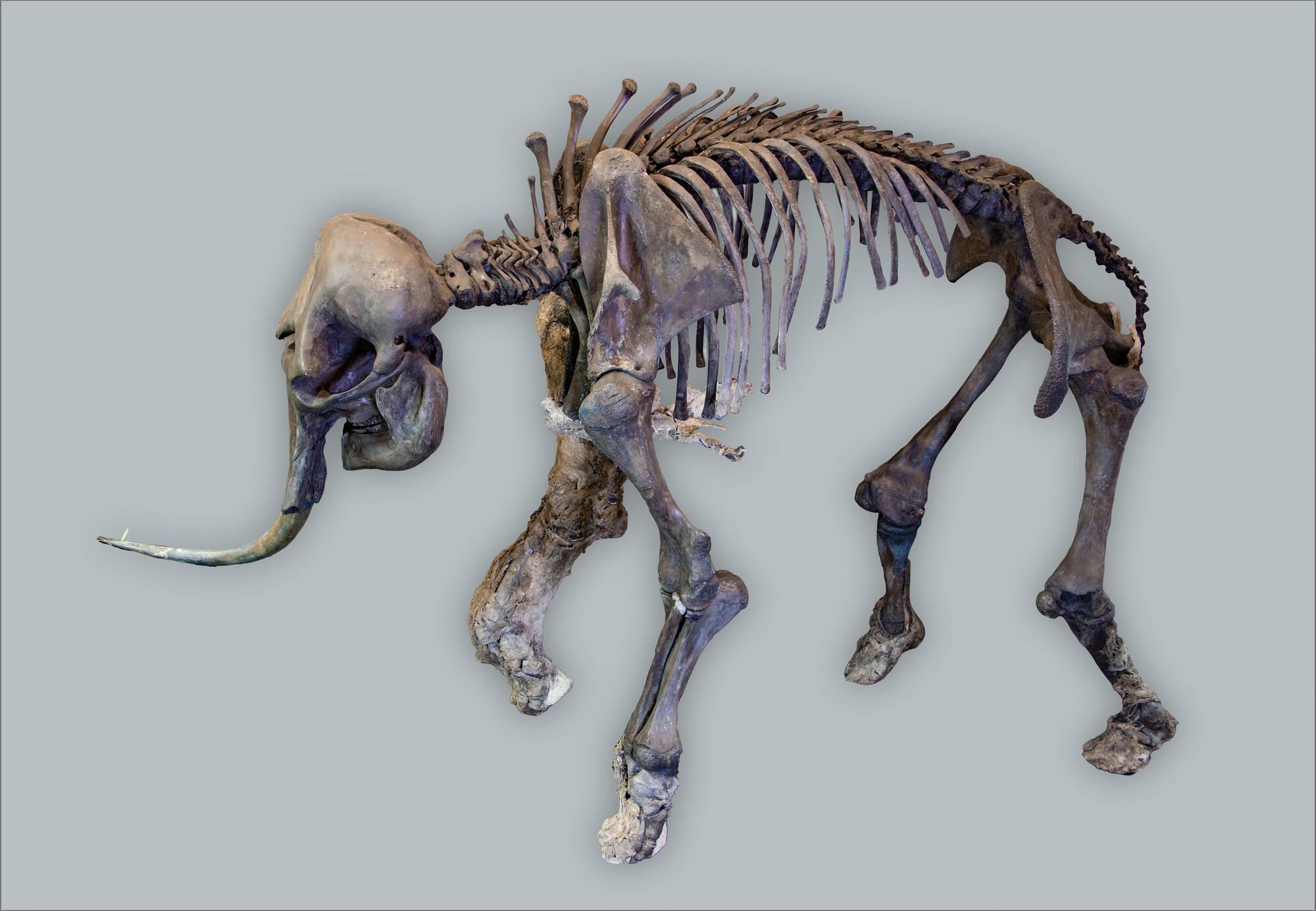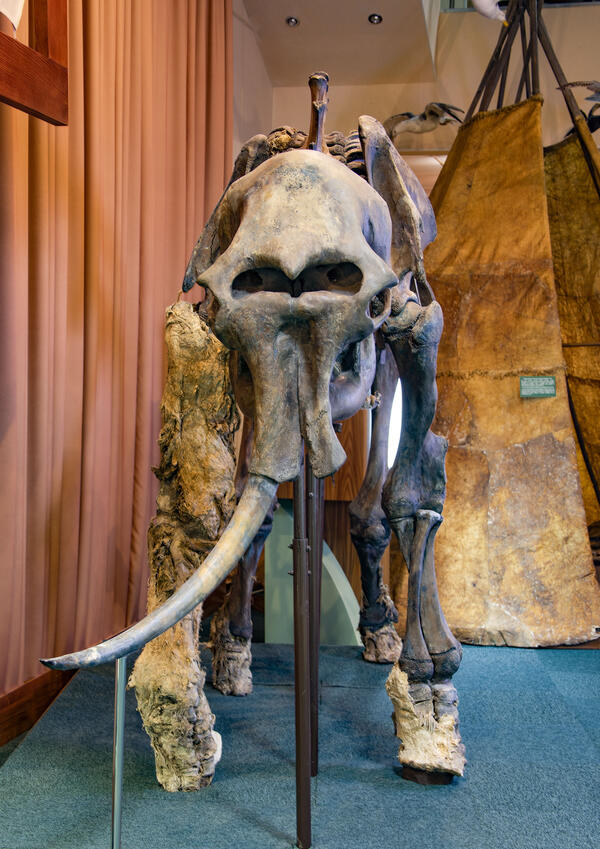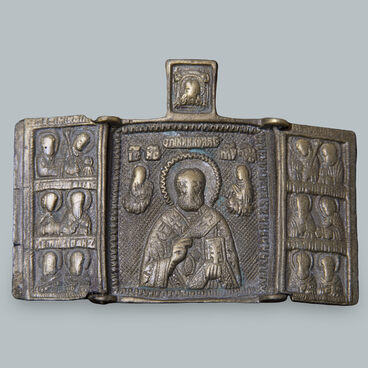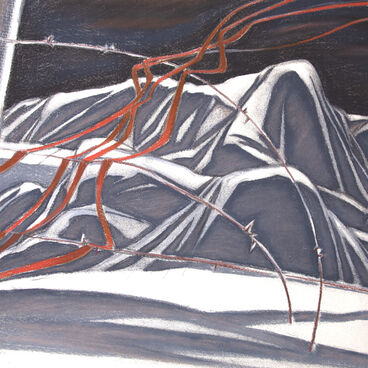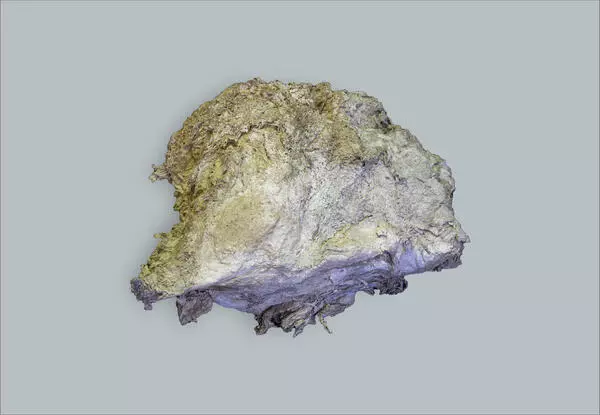The Sopkarginsky mammoth, also known as “mammoth Zhenya”, is a unique exhibit, which has no analogs in the collections of Russian museums. In August 2012, its remains were discovered by a Dolgan schoolboy Evgeny Salinder near the marine hydrometeorological coastal station Sopochnaya Karga, near the village of Vorontsovo. The boy told his father about the find, who then passed the information to the station master, and the latter contacted the specialists.
The excavations at the site were carried out by the supervisor of the weather station Alexey Bystrov, the coordinator of projects of the International mammoth committee Sergey Venediktovich Gorbunov, and Alexey Nikolaevich Tikhonov — Ph.D. in biology and the Scientific Secretary of the Committee of Studying Mammoths and Mammoth fauna, and also other experts and local residents.
The carcass lifted from the permafrost strata was sent for study to Dudinka and later to the Zoological Institute of the Russian Academy of Sciences in Saint Petersburg. The study of the find continued for two and a half years. The right lower part of the animal and the remains of the internal organs of the thorax were preserved well enough; the upper left half decomposed extensively, as well as the abdominal organs.
The scientists were able to draw some conclusions about the fate of the mammoth. That was a 15–16-year-old male, which died in summer: no winter undercoat was found on the preserved parts of its skin. The layer of subcutaneous fat, which remained from winter, shows how extensively animals accumulated fat for the winter. The left tusk was found to be underdeveloped from birth. The experts believe that with such a defect, the mammoth could not scoop through snow and provide itself with enough food, and therefore died of starvation.
A group of restorers-taxidermists of the Zoological Museum did a lot of work to reconstruct the lost and damaged parts of the skeleton. In particular, the specialists had to restore the missing parts of the lower jaw, ribs, vertebrae, scapulae, and pelvis, make copies of the left zygomatic arch, fibulae, phalanges, caudal vertebrae, and the only right tusk.
The outcome of the work was a mammoth’s skeleton with fragments of sublimated soft tissues; the stuffed mammoth is a model of the right half of the carcass with the preserved skin, and mummified anatomical preparations.
The find is 40–45 thousand years old. This is the first and so far the only find of such a good state of preservation in the Taimyr.
The excavations at the site were carried out by the supervisor of the weather station Alexey Bystrov, the coordinator of projects of the International mammoth committee Sergey Venediktovich Gorbunov, and Alexey Nikolaevich Tikhonov — Ph.D. in biology and the Scientific Secretary of the Committee of Studying Mammoths and Mammoth fauna, and also other experts and local residents.
The carcass lifted from the permafrost strata was sent for study to Dudinka and later to the Zoological Institute of the Russian Academy of Sciences in Saint Petersburg. The study of the find continued for two and a half years. The right lower part of the animal and the remains of the internal organs of the thorax were preserved well enough; the upper left half decomposed extensively, as well as the abdominal organs.
The scientists were able to draw some conclusions about the fate of the mammoth. That was a 15–16-year-old male, which died in summer: no winter undercoat was found on the preserved parts of its skin. The layer of subcutaneous fat, which remained from winter, shows how extensively animals accumulated fat for the winter. The left tusk was found to be underdeveloped from birth. The experts believe that with such a defect, the mammoth could not scoop through snow and provide itself with enough food, and therefore died of starvation.
A group of restorers-taxidermists of the Zoological Museum did a lot of work to reconstruct the lost and damaged parts of the skeleton. In particular, the specialists had to restore the missing parts of the lower jaw, ribs, vertebrae, scapulae, and pelvis, make copies of the left zygomatic arch, fibulae, phalanges, caudal vertebrae, and the only right tusk.
The outcome of the work was a mammoth’s skeleton with fragments of sublimated soft tissues; the stuffed mammoth is a model of the right half of the carcass with the preserved skin, and mummified anatomical preparations.
The find is 40–45 thousand years old. This is the first and so far the only find of such a good state of preservation in the Taimyr.
